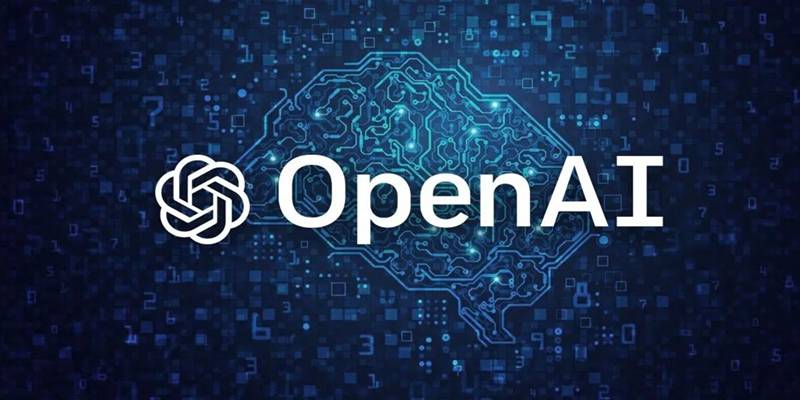Advertisement
Several new technologies are changing the way people use tools because of how quickly artificial intelligence is growing. Recently, the AI chatbot has been one of the most important new technologies. When it comes to customer service, education, entertainment, and software development, these digital assistants have found their place. They can mimic real human conversation. Realizing the reasons behind their rising success is becoming more important as they become more commonplace.
Modern AI chatbots are strong because they combine many AI skills that work together to understand and react to human input well. These technologies are some of the most important ones:
AI chatbots rely on NLP to analyze and understand human language. NLP enables them to process syntax, semantics, and context, which allows for more accurate and contextually appropriate responses.
Machine learning algorithms enable chatbots to learn from historical interactions and improve their responses over time. Neural networks, particularly transformers, power their ability to generate new responses based on complex input patterns.
Modern chatbots can maintain context across multiple turns in a conversation. It means they can remember earlier inputs within the same interaction, which allows for more natural and fluid dialogue.
Instead of retrieving answers from a database of responses, advanced chatbots generate text dynamically, creating tailored replies that suit the user's intent and tone.
Many AI chatbots can adjust their responses based on prior interactions, user preferences, or stated goals, resulting in a more customized user experience.
AI chatbots are being adopted at a rapid pace across both personal and professional settings. Several factors contribute to this surge in popularity:
In a world where speed matters, AI chatbots offer immediate access to information. Whether answering a factual query, explaining a complex topic, or offering recommendations, they respond without delay, eliminating the need for users to search manually through web pages or documents. This on-demand accessibility makes them especially useful for time-sensitive tasks and quick decision-making.

Businesses are using AI chatbots to deliver faster, 24/7 customer support. These bots can resolve common inquiries, handle multiple conversations simultaneously, and escalate complex issues to human agents. It not only enhances the customer experience but also reduces operational costs. Their consistent availability ensures that customers receive assistance even outside normal business hours, improving satisfaction and loyalty.
For professionals, AI chatbots function as intelligent assistants. They can help manage schedules, generate reports, summarize documents, and provide strategic insights. In project management, they assist in task tracking and workflow optimization, reducing time spent on routine tasks. By automating repetitive processes, chatbots free up time for users to focus on higher-value activities and decision-making.
Educators and learners alike benefit from AI chatbots. They can provide instant explanations, practice quizzes, tutoring support, and writing assistance. By adapting to the user’s level of understanding, chatbots help personalize the learning experience. This individualized guidance allows students to learn at their own pace while receiving immediate feedback and clarification.
Writers and content creators use AI chatbots to brainstorm ideas, develop outlines, rewrite drafts, and improve tone or grammar. This support reduces the effort involved in content production and enhances overall quality. Chatbots can also help overcome creative blocks by suggesting new angles, perspectives, or stylistic approaches.
Developers increasingly use AI chatbots to understand coding concepts, identify bugs, and generate code snippets. They can explain best practices, suggest frameworks, and serve as always-available collaborators for technical problem-solving. For new learners, chatbots offer a judgment-free environment to explore programming without pressure or fear of failure.
Beyond utility, many individuals use AI chatbots for casual conversation, entertainment, and even emotional support. The ability to engage in friendly, low-stakes dialogue makes them appealing companions for informal interaction. Some users even find comfort in having a responsive digital presence that listens and interacts without judgment or bias.
AI chatbots are increasingly capable of understanding and responding in multiple languages, making them valuable tools in global communication. This feature enables businesses to serve international customers more effectively and allows individuals to engage across language barriers without needing a human translator.
It also promotes inclusivity by making digital services more accessible to non-native speakers around the world.
AI chatbots can be integrated into websites, mobile apps, messaging services, and enterprise systems with ease. It allows them to serve as a central communication tool across multiple touchpoints, ensuring users get support wherever they interact.
Such integration enhances the user experience and strengthens brand presence across digital channels.
They also reduce the friction between platforms by maintaining consistent interactions, regardless of where the conversation begins.

AI chatbots enable organizations to scale customer support and operational tasks without proportionally increasing staffing costs. They can handle thousands of interactions simultaneously, providing consistent service at a fraction of the cost of human agents.
This cost-efficiency is especially beneficial for startups and growing businesses with limited resources.
Additionally, chatbots reduce the need for extensive onboarding and training, making them a sustainable long-term solution.
AI chatbots represent a pivotal shift in how humans interact with technology. From their humble beginnings as scripted responders to their current state as dynamic, intelligent assistants, they’ve transformed into powerful tools across every domain of life and work.
Their growing popularity stems from their ability to save time, provide personalized assistance, and deliver reliable communication at scale. As their capabilities continue to expand, AI chatbots will remain at the forefront of digital transformation—redefining convenience, productivity, and the way people connect with information.
Advertisement

Explore OpenAI’s technologies, ethical AI practices, and their impact on education, innovation, and global AI development.

Want robots that understand natural language? Discover LeRobot by Hugging Face—an open-source library connecting AI models with real-world robotics systems

Learn how developers feel about AI’s growing role in software workflows and what changes they expect in daily coding.

Wondering how to edit images with ease? Learn how DALL•E lets you modify photos using simple text descriptions—no complex tools needed. Discover its powerful features today

Explore 5 free AI tools powered by ChatGPT that help you write better emails and summarize inbox content in seconds.

Looking to boost your SEO in WordPress? Discover 10 AI-powered tools and strategies to improve your content, keyword research, image optimization, and more in 2025.

Learn why FraudGPT is a growing cyber threat and follow 10 essential steps to protect your personal and business data.

Google Veo 2 review highlights its advanced video generation tool capabilities while raising serious AI video model concerns

ROI, task performance, fidelity, personality, safety, accuracy, and inference speed are the most important GenAI value metrics

Ready to dive into Python? This guide covers the core concepts you need to understand, helpful resources, and project ideas to start using Python effectively. Perfect for both beginners and those brushing up

Discover how ChatGPT helps build efficient workflows by improving focus, automating tasks, and enhancing clarity.

Streamline proposal writing with ChatGPT while improving structure, tone, and impact to increase your chances of success.